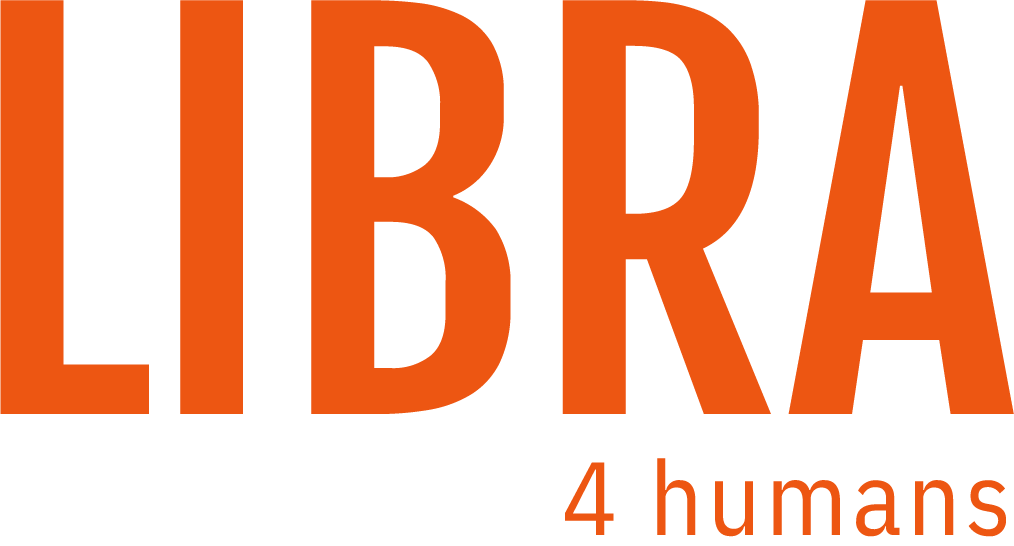To outrank your competitors, you need to analyze competitor keywords. This article will show you how to conduct a competitive analysis to find these keywords and use them to enhance your SEO strategy.
Introduction to Competitor Keyword Analysis
Competitor keyword analysis is a crucial step in any SEO strategy, allowing you to identify and target high-value keywords that your competitors are ranking for. By analyzing your competitors’ keyword strategies, you can gain valuable insights into their strengths and weaknesses, and develop a more effective SEO plan.
This involves using keyword research tools to identify relevant keywords, analyzing competitor websites and content, and tracking competitor rankings. Understanding keyword research, search volume, and competitor keyword analysis is essential for making informed decisions about your SEO strategy.
Key Takeaways
- Conducting competitor keyword analysis is essential for optimizing SEO strategies, revealing valuable keywords that drive traffic to competitors’ sites.
- Utilizing tools like Semrush, Ahrefs, and SpyFu enables effective competitor keyword discovery and provides insights into keyword strategies and search intent.
- Identifying content gaps and tracking competitor rankings allows for enhanced content creation and strategic adjustments, improving visibility and organic traffic.
- Analyzing competitors pages helps identify keyword strategies and opportunities for SEO improvements.
Understanding Competitor Keywords

Competitor keywords refer to the words and phrases that your competitors aim for in their digital marketing strategies. These relevant keywords are vital for grasping their online presence and play a significant role in their SEO strategies, helping them rank higher in search engine results and attract more traffic. But why should you care about the related keywords your competitors are using? The answer lies in the insights you can gain from analyzing these new keywords.
Conducting competitor keyword research helps determine the relevance of specific keywords to your audience, enhancing targeting efforts. This process reveals which keywords drive traffic to competitors’ sites and uncovers valuable opportunities for your own SEO strategy. Imagine knowing exactly which search phrases are helping your competitors climb the ranks—wouldn’t that give you a significant advantage? Focusing on high volume keywords can significantly boost your search visibility and attract more traffic to your site.
Competitor keyword analysis is fundamental for crafting a successful competitive keyword analysis SEO strategy. Understanding which keywords are valuable to your competitors enables you to direct your SEO efforts more effectively, improving search engine rankings and driving more organic traffic. Now, let’s explore how to find competitor keywords and analyze these competitor keywords using powerful SEO tools, including keyword competition analysis.
Finding Competitors’ Keywords Using SEO Tools
Identifying competitor keywords is crucial for an effective SEO strategy, helping businesses understand the search landscape and spot opportunities for new content and finding keywords targeting. But how do you go about finding these competitor keywords? The answer lies in utilizing specific SEO tools designed to provide insights into your competitors’ keyword strategies. Using a keyword tool can simplify the process of identifying valuable keywords that your competitors are targeting.
First, identify your main competitors. Then, use various SEO tools to analyze their keyword data and uncover valuable insights. This process involves using tools like Semrush, Ahrefs, and SpyFu, each of which offers unique features and capabilities for competitor keyword analysis.
Next, we’ll explore how to use these powerful SEO tools to find competitors’ keywords and inform your own SEO strategies. From Semrush’s Keyword Gap tool to Ahrefs’ Site Explorer and SpyFu’s competitive intelligence features, you’ll learn how to leverage these tools to gain a competitive edge.
Using Semrush for Keyword Discovery
Semrush is a powerful tool used for tracking website rankings and analyzing competitors’ domain metrics. Start using Semrush for keyword research by entering a competitor’s URL to reveal data on their keywords and domain performance. One of the most valuable features of Semrush is the Keyword Gap tool, which identifies overlapping keywords with competitors and highlights keywords where you rank, but competitors rank higher.
Use the Competitors dashboard under Domain Analytics > Organic Research to analyze your competitors websites and their keyword rankings in detail. The keyword research tool lets you enter up to four competitors’ domains to compare their keyword strategies and identify opportunities to analyze competitor content for your own SEO efforts with search engines through seo competitor analysis on the search engine results page.
Semrush provides insights into competitors’ keywords, position changes, and traffic estimates, helping you pinpoint which keywords to target for better SEO performance. With Semrush, you can uncover valuable keyword opportunities, understand your competitors’ strengths and weaknesses, and refine your own SEO strategy to drive more organic traffic to your site.
Leveraging Ahrefs for Competitor Analysis
Ahrefs is another powerful tool for competitor analysis, offering a range of features to help you understand your competitors’ keyword strategies by analyzing a competitor’s domain. The Site Explorer feature of Ahrefs is particularly useful for identifying top competitors for your target keywords and analyzing their backlink strategies. By accessing competitors’ backlink profiles, you can uncover snippet wins and analyze lost rankings, providing valuable insights into their SEO strategies.
Ahrefs also allows you to filter keywords by difficulty and identify content gaps where competitors are ranking, but you are not. This feature helps you discover topics your competitors cover that you don’t, revealing hidden opportunities to enhance your content and SEO efforts.
Leveraging Ahrefs for competitor keyword analysis provides a deeper understanding of competitors’ strategies and uncovers hidden opportunities to enhance your own SEO performance.
Utilizing SpyFu for Competitive Insights
SpyFu is a competitive intelligence tool that allows users to analyze competitors’ keyword strategies and performance. One of the key features of SpyFu is its ability to uncover both paid and organic keywords, providing insights into estimated clicks, cost-per-click, monthly spend, and top keywords for competitors. This information is invaluable for understanding your competitors’ PPC campaigns and overall keyword strategy. SpyFu also allows you to track competitor rankings, providing insights into their keyword performance over time.
The Advertising Research tool in SpyFu can check a competitor’s paid search keywords, revealing valuable information about their PPC campaigns and Google Ads campaigns, including google ads data. Additionally, the Ads History tool allows you to assess which ads perform well for competitor keywords, providing insights into successful ad strategies and search campaigns.
Despite the limitations of the free version, SpyFu offers a wealth of information that can help you gain a competitive edge by understanding your competitors’ keyword strategies and performance.
Creating a List of Topics and Keywords
To start a competitor keyword analysis, you need to create a list of topics and keywords relevant to your business. This involves brainstorming ideas, using keyword research tools, and analyzing competitor websites and content. You should identify relevant keywords, including transactional and informational keywords, and organize them into a keyword list.
This list will help you identify gaps in your content strategy and develop a more effective SEO plan. Consider using tools like Google Ads, Ahrefs, or SEMrush to find competitor keywords and analyze their search volume, keyword difficulty, and other metrics.
Analyzing Search Intent Behind Competitor Keywords

Understanding the search intent behind competitor keywords and search term and search terms is crucial for tailoring your content to meet user expectations and enhancing engagement and conversion rates. Search intent refers to the purpose behind a user’s query, which guides their search behavior and expectations. There are four types of search intent: informational, navigational, commercial, and transactional, each reflecting different user goals.
Informational intent is when users are looking for information on a particular topic. Navigational intent is when users want to find a specific website. Commercial intent indicates that users are considering a purchase, and transactional intent means they are ready to buy. Analyzing the search intent behind competitor keywords allows you to create content that aligns with user expectations and drives higher engagement. Identifying your organic competitors can provide valuable insights into the search intent behind their keywords.
For example, keywords with high commercial intent often indicate that users are closer to making a purchase decision. Long-tail keywords typically capture specific user queries, providing opportunities to attract a more targeted audience and improve conversion rates.
By understanding and addressing the search intent behind competitor keywords and market trends, you can create a more effective keyword list and engaging content that meets the needs of your target audience, including transactional keywords and particular keyword.
Evaluating Keyword Metrics

Evaluating keyword metrics is a critical step in prioritizing which keywords to target in your SEO strategies. One of the most important metrics to consider is keyword difficulty, which measures the difficulty in achieving a high organic ranking for a keyword. Keywords with high difficulty scores generally correlate with high search volumes and levels of purchase intent, making them valuable targets for your SEO efforts.
Another important metric is search volume, which indicates the average number of monthly searches for a keyword. Higher search volumes often mean greater potential traffic, but they also typically come with higher competition. CPC (cost-per-click) represents the amount paid per ad click, indicating the potential profit from clicks and helping you gauge the commercial value of a keyword. Analyzing website traffic can help you understand the impact of your keyword strategies and make data-driven decisions.
Competitive keyword data should include metrics such as Google search volume, competition, and Opportunity Score. Effective keyword research tools should provide essential metrics like traffic, keyword difficulty, and competitive SERP analysis, simplifying the user experience while offering straightforward suggestions for optimizing target keywords.
Identifying Content Gaps

Content gaps refer to topics of interest to your audience that are not covered on your site. Identifying these gaps through competitor keyword analysis reveals potential opportunities to enhance your content strategy and improve your site’s visibility. Tools like Ahrefs’ Content Gap tool allow users to discover keywords that competitors rank for, but they do not, highlighting areas where you can improve your content.
Conducting a content gap analysis helps identify keywords your competitors rank for but you don’t, allowing you to create engaging content that addresses these gaps. Updating existing content with newly identified keywords can also improve its relevance and ranking potential, driving more traffic to your site. Optimizing product pages can help fill content gaps and improve your site’s relevance for transactional search queries.
Analyzing top-ranking content can reveal opportunities to create more informative and engaging content, ultimately enhancing your site’s visibility and attracting more organic search and organic traffic.
Improving Search Visibility
Improving search visibility is a key goal of competitor keyword analysis. By identifying and targeting high-value keywords, you can increase your website’s visibility in search engine results pages (SERPs) and drive more traffic to your site. This involves optimizing your website and content for relevant keywords, using techniques like keyword tracking, backlink strategies, and content gap analysis. You should also analyze your competitors’ SEO strategies, including their use of paid keywords, organic keywords, and keyword research tools. Understanding search engine algorithms and market trends is crucial for improving search visibility and outranking your competitors.
Tracking Competitor Rankings
Tracking competitor ranks is vital for adapting your SEO strategies and maintaining competitiveness in search results. Various tools can help you track keyword rankings and gain insights into your competitors’ performance. For example, AccuRanker provides real-time data refresh capabilities, ensuring precise tracking of keyword tracking. Advanced Web Ranking offers specialized tools for forecasting keyword performance over time.
Nozzle is praised for its detailed data visualization and customizable reporting features, enhancing tracking accuracy. Additionally, tools like Rank Tracker allow users to monitor an unlimited number of keywords at all tiers, making it versatile for various needs. Regular updates are crucial, and many tools provide daily or weekly tracking options to stay current with competitors’ rankings.
Tracking competitor rankings allows you to adapt your SEO strategies, stay ahead of the competition, and maintain your site’s visibility in search results.
Best Practices for Competitor Keyword Analysis
To get the most out of competitor keyword analysis, you should follow best practices like regularly tracking competitor rankings, analyzing competitor content, and identifying new keyword opportunities. You should also use a variety of keyword research tools, like Ahrefs, SEMrush, or Moz, to get a comprehensive view of your competitors’ keyword strategies. Consider using a keyword gap tool to identify gaps in your content strategy and develop a more effective SEO plan. Additionally, you should prioritize low-competition keywords, create high-quality content, and build backlinks to improve your website’s authority and ranking.
Common Mistakes to Avoid
When conducting competitor keyword analysis, there are several common mistakes to avoid. These include not regularly tracking competitor rankings, not analyzing competitor content, and not identifying new keyword opportunities. You should also avoid targeting keywords with high competition, not optimizing your website and content for relevant keywords, and not using a variety of keyword research tools. Additionally, you should avoid ignoring search engine algorithms and market trends, not prioritizing low-competition keywords, and not creating high-quality content.
By avoiding these mistakes, you can develop a more effective SEO strategy and improve your website’s search visibility. Remember to stay up-to-date with the latest SEO trends and best practices, and continuously monitor your competitors’ keyword strategies to stay ahead in the search engine results pages.
Implementing Competitor Keyword Data into Your Strategy

Integrating competitor keyword insights into your SEO strategy and marketing strategy can help you capture high-volume and low-difficulty keyword ideas, optimizing your content strategy and driving more organic traffic to your site. After selecting competitor keywords, it’s crucial to organize keywords, define your goals and analyze keyword performance for integration into your strategy. Using tools to find keywords that your competitors rank for can provide valuable insights for your own SEO strategy.
Focusing on long-tail keywords can attract a more targeted keywords audience, often resulting in higher conversion rates. Creating content that surpasses competitors’ offerings can enhance engagement and drive more organic traffic. Building backlinks to improve ranking is also essential after finding competitor keywords.
Addressing specific concerns or topics on your site increases visibility through informational keywords, drawing more traffic. Implementing competitor keyword data into your strategy can help you stay ahead of the competition and achieve better SEO results.
Summary
In summary, competitor keyword analysis is a powerful tool for enhancing your SEO strategies. By understanding which keywords your competitors are targeting, you can uncover valuable insights that inform your own SEO efforts. From finding competitors’ keywords using tools like Semrush, Ahrefs, and SpyFu to analyzing search intent, evaluating keyword metrics, identifying content gaps, and tracking competitor rankings, each step is crucial for developing a comprehensive and effective SEO strategy. Utilizing an SEO tool can streamline the process of competitor keyword analysis and provide actionable insights.
The key to success lies in implementing the insights gained from competitor keyword analysis into your own strategy. By capturing high-volume, low-difficulty keywords, creating superior content, and building backlinks, you can drive more organic traffic to your site and outperform your competitors. Remember, the digital marketing landscape is constantly evolving, and staying ahead of the competition requires continuous adaptation and refinement of your SEO strategies.
Book a Call with LIBRA 4 Humans
Ready to elevate your SEO strategies and outshine your competitors? Schedule a consultation with LIBRA 4 Humans today! Our team of experts is here to help you leverage competitor keyword analysis and tailor your SEO efforts for maximum impact. Book a call now and take the first step towards dominating the search engine results page!
Frequently Asked Questions
What are competitor keywords?
Competitor keywords are the specific words and phrases that rival businesses focus on in their digital marketing strategies to enhance their visibility in search engine results. Understanding these can help you optimize your own marketing efforts.
Why is analyzing competitor keywords important for SEO?
Analyzing competitor keywords is crucial for SEO as it reveals the keywords driving traffic to their sites, allowing you to identify valuable opportunities and refine your own targeting strategy effectively. This insight enhances your ability to compete in the digital landscape.
What tools can I use to find competitor keywords?
To effectively find competitor keywords, leverage SEO tools such as Semrush, Ahrefs, and SpyFu, which offer valuable insights into keyword strategies and search metrics. These tools will help you stay ahead in your market.
How can understanding search intent behind competitor keywords improve my SEO strategy?
Understanding search intent behind competitor keywords significantly enhances your SEO strategy by allowing you to tailor content to meet user expectations, which boosts engagement and conversion rates. This alignment with various search intents—informational, navigational, commercial, and transactional—enables you to create more relevant and effective content.
What are content gaps, and how can I identify them?
Content gaps are topics relevant to your audience that are missing from your site. You can identify them using tools like Ahrefs’ Content Gap tool, which highlights keywords your competitors rank for that you do not.






